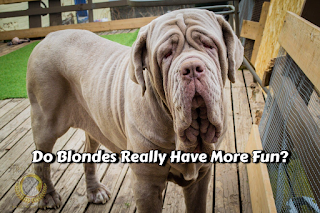Let’s Talk Hips
Sherilyn Allen, a long time Neo breeder and Veterinarian discussed her thoughts on Neo hips in her book “ The Official Book of the Neapolitan Mastiff”.
In this book she discussed how the laxity in Neos (all laxity including skin and joints) is likely caused by an under active thyroid. She went over the difference between laxity in joints vs hip dysplasia and how often Neos with laxity never go on to develop arthritis. Joint laxity in Neapolitan Mastiffs is not an anomaly, it is a trait of the breed. Now, this isn’t to say that hip dysplasia isn’t a more common issue in Neos, but it does bring up some questions that breeders and Neo owners should be asking, like if there is more to hip dysplasia than genetics.
There are many factors that affect the possibility of developing hip dysplasia. Genetic predisposition is only one small piece of the puzzle.
Like with most things, hip health starts in the whelping box. Making sure pups have a flooring that doesn’t slip is very important. With proper traction a pup can start to build strength in their rears and keep their joints from separating. This tip can be used when pups are also growing. Slippery floors can be rough on a pups joints, with the femoral head moving in the socket, causing damage. Area rugs are a quick fix for slippery floors.
But how do we help with their joint stability? As pups, running on uneven ground like a backyard or field is fantastic for joints, so long as you are following the “5 minutes of exercise per month of age” rule. Swimming or underwater treadmill walking is also an excellent way to build up rear muscles without wear on the joints. By making the rear stronger, the muscles will pull the ball into the joint. Walking on a treadmill can also help build the rear, especially on an incline. It is best to discuss which approach is best for your dog with your veterinarian.
Avoiding certain activities can help as well. Stopping Neapolitan Mastiffs from jumping off of furniture or out of vehicles can help keep the wear and tear of joints down, but stairs can also be a big issue. Not only do they wear on the joints and make many dogs want to leap off of the last few steps, but a growing Neo is not exactly the most coordinated and may lead to a fall, doing some pretty bad damage to their joints. We recommend keeping Neapolitan Mastiff puppies off of stairs until 18 months, but if you can avoid stairs longer, the better. We actually gate our upstairs off so none of our Neos, no matter the age, can go upstairs.
Although we know that certain exercises and environmental factors are very important, none are as important as the weight of your pup. Keeping your puppy lean during growth takes the extra strain off of their joints. As stated in the article below
“obesity could well be the single most significant environmental factor affecting the development of hip dysplasia and osteoarthritis.”
It's exciting to see that scale moving up as your Neo grows, but bigger is definitely not better while they are growing. An overweight puppy can cause other joint issues as well. A puppy who is down on it's pasterns is a difficult thing to reverse (if possible at all).
Choosing a breeder that health tests should lessen your odds as well. Breeders do their best to choose dogs that will improve hip scores for their puppies. Unfortunately, even with strict health testing breeders are still fighting the battle of common breed ailments like hip dysplasia. It's the difficult task of breeding the healthiest puppies you can while keeping their appearance as close to the breed standard as possible. Without laxity, Neos would end up looking like Cane Corso's.
Even with all of this knowledge, there are still no guarantees when it comes to hip dysplasia. But, hopefully puppy owners will keep these tips in mind so they can give their dogs the best chance they can.
I encourage you to read the full article below for more in-depth information.




Comments
Post a Comment